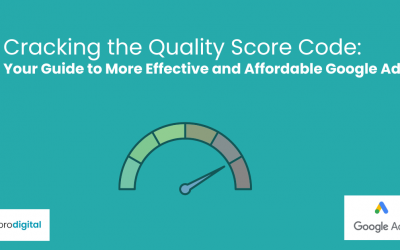Mastering Negative Keywords: The Secret Weapon for Smarter Ad Campaigns
Hey there, digital marketing mavens! 👋 Today, we’re diving deep into a topic that might sound a bit counterintuitive at first but trust me, it’s a total game-changer for your ad campaigns. We’re talking about negative keywords – your secret weapon for smarter, more efficient advertising. So grab your favorite caffeinated beverage, and let’s get this party started! ☕🎉
What Are Negative Keywords? The Basics
Alright, let’s start with the basics. Negative keywords are words or phrases that you add to your ad campaigns to tell search engines, “Hey, don’t show my ads for these searches!” They act like a filter, helping you avoid wasting your ad budget on irrelevant clicks.
Imagine you’re running an online store selling vegan snacks (yum!). You’ve set up your Google Ads campaign targeting keywords like “healthy snacks,” “plant-based treats,” and “vegan munchies.” But then you notice you’re getting clicks from people searching for “beef jerky snacks” or “cheese crackers.” Oops! That’s where negative keywords come to the rescue.
By adding “beef,” “jerky,” “cheese,” and other non-vegan terms as negative keywords, you ensure your ads only show up for searches relevant to your vegan snacks. It’s like having a bouncer for your ad campaign, keeping out the riffraff and letting in only the VIPs (Very Important Plant-eaters, in this case).
Why Should You Care About Negative Keywords?
Now that we’ve covered the what, let’s talk about the why. Why should you bother with negative keywords? Well, my friend, the benefits are pretty sweet:
- Save That Cash! 💰 Every click on your ad costs money. By using negative keywords, you’re essentially putting up a “No Soliciting” sign for irrelevant searches. This means you’re not wasting your precious ad budget on people who are unlikely to convert. It’s like plugging all the little leaks in your marketing budget boat!
- Boost That Quality Score 📈 Google’s all about relevance, baby. They want to make sure they’re showing users the most relevant ads for their searches. When you use negative keywords effectively, you’re helping Google do its job better. This can lead to higher Quality Scores for your ads, which in turn can result in better ad positions and lower costs per click. It’s a win-win-win situation!
- Improve Conversion Rates 🎯 When your ads show up for the right searches, you’re more likely to get clicks from people who actually want what you’re selling. This means a higher chance of converting those clicks into sales or leads. It’s like making sure everyone at your party actually RSVP’d, instead of dealing with a bunch of random gate-crashers.
- Fine-tune Your Targeting 🎛️ Negative keywords give you more control over who sees your ads. It’s like having a super-precise targeting system for your marketing efforts. You can exclude specific demographics, interests, or search intents that don’t align with your ideal customer profile.
- Reduce Ad Fatigue 😴 By ensuring your ads are only shown to relevant audiences, you reduce the chances of your target market getting tired of seeing your ads in irrelevant contexts. This can help maintain the effectiveness of your ad copy and visuals over time.
- Competitive Edge 🏆 Many advertisers overlook the power of negative keywords. By mastering this technique, you can gain a significant advantage over competitors who might be wasting their budgets on irrelevant clicks.
How to Use Negative Keywords Like a Pro
Alright, now that you’re sold on the awesomeness of negative keywords, let’s talk strategy. Here’s how to wield this powerful tool like a true marketing ninja:
- Brainstorm! 🧠 Start by thinking about terms related to your product or service that you definitely don’t want to target. In our vegan snack example, you might come up with:
- Meat-related terms: beef, chicken, pork, jerky
- Dairy products: cheese, milk, yogurt
- Non-vegan ingredients: eggs, honey, gelatin
- Competing diets: keto, paleo (if they typically include animal products)
Pro tip: Get your team involved in this brainstorming session. Different perspectives can help you catch potential negative keywords you might have missed.
- Check Your Search Terms Report 🔍 This is where the real gold is hidden. Regularly review the actual search terms that are triggering your ads. You might spot some surprises that should be added as negatives. Here’s how to do it:
- In Google Ads, go to Keywords > Search Terms
- Look for terms that are irrelevant to your business
- Pay special attention to terms with high impressions but low CTR or conversion rates
Make this a weekly or bi-weekly habit to keep your campaigns in tip-top shape.
- Start Broad, Then Get Specific 🌳 Begin with broad match negative keywords to cast a wide net, then add phrase and exact match as you refine your strategy. For example:
- Broad match: -meat (will exclude searches containing meat, meaty, meatball, etc.)
- Phrase match: -“with meat” (will exclude searches like “snacks with meat” but not “meatless snacks”)
- Exact match: -[beef jerky] (will only exclude the exact term “beef jerky”)
This layered approach helps you fine-tune your exclusions without accidentally filtering out potential customers.
- Use Negative Keyword Lists 📋 Create themed lists of negative keywords that you can apply across multiple campaigns. Some ideas for lists:
- Competitor names
- Unrelated products or services
- Job-seeking terms (if you’re not hiring)
- Free or cheap (if you’re targeting premium customers)
- Educational terms (if you’re selling products, not courses)
These lists can be a real time-saver and help maintain consistency across your campaigns.
- Don’t Go Overboard 🛑 While negative keywords are awesome, it’s possible to have too much of a good thing. Be careful not to add too many, or you might accidentally exclude valuable traffic. Some tips to avoid this:
- Regularly review your negative keyword list
- Use search volume data to prioritize high-impact negatives
- Consider the potential for phrase variations (e.g., adding “free” might exclude “gluten-free”)
- Keep It Fresh 🌱 Your negative keyword strategy should evolve with your business and the market. Make sure to:
- Regularly review and update your lists
- Stay on top of industry trends and new slang
- Adjust for seasonal changes (e.g., “Halloween candy” might be relevant in October but not in April)
- Use Negative Keywords at Different Levels 🏗️ Apply negative keywords at the campaign, ad group, or even keyword level for maximum control:
- Campaign level: Broad exclusions relevant to your entire business
- Ad group level: More specific exclusions relevant to particular product lines
- Keyword level: Ultra-specific exclusions for individual keywords
- Learn from Your Competitors 🕵️ Use tools like SEMrush or SpyFu to see what keywords your competitors are bidding on (and which ones they’re not). This can give you ideas for both positive and negative keywords.
- Test and Measure 📊 Like everything in digital marketing, your negative keyword strategy should be data-driven. Keep an eye on key metrics like:
- Click-through rate (CTR)
- Conversion rate
- Cost per conversion
- Quality Score
If you see improvements after adding negative keywords, you’re on the right track!
Common Pitfalls to Avoid
Even marketing pros can sometimes stumble when it comes to negative keywords. Here are some common mistakes to watch out for:
- Neglecting to use negative keywords at all This is like leaving money on the table. Don’t be that marketer!
- Adding negative keywords without proper research Make sure you understand the full impact of each negative keyword before adding it.
- Forgetting to use match types for negative keywords Just like with regular keywords, match types matter for negatives too.
- Not regularly reviewing and updating negative keyword lists Set a reminder to give your lists a once-over at least monthly.
- Applying the same negative keywords across all campaigns What’s irrelevant for one campaign might be gold for another. Tailor your approach!
Wrapping It Up
Phew! We’ve covered a lot of ground, haven’t we? Negative keywords might sound like a downer, but they’re actually your secret weapon for running smarter, more effective ad campaigns. By mastering this technique, you’ll be well on your way to:
- Saving money on your ad spend
- Improving your ad relevance and Quality Score
- Boosting your conversion rates
- Gaining a competitive edge in your industry
Remember, the key to success with negative keywords is constant vigilance (as Mad-Eye Moody would say). Keep refining your lists, stay on top of your search terms reports, and don’t be afraid to experiment.
So, are you ready to take your ad campaigns to the next level with the power of negative keywords? I hope this guide has given you the knowledge and inspiration to dive in and start optimizing!
Got any cool negative keyword stories or tips of your own? Drop ’em in the comments below – I’d love to hear from you! And if you found this post helpful, don’t forget to share it with your fellow marketing wizards. Let’s spread the negative keyword love! ❤️
Happy optimizing, friends! 🚀






